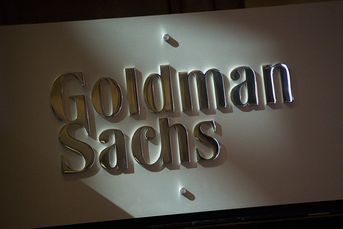Looking beyond the basic bond ladder strategy
Fixed-income securities — traditional tools to dampen portfolio volatility — are now behind investment strategies intended to guarantee retirement in-come and cash flow.
Fixed-income securities — traditional tools to dampen portfolio volatility — are now behind investment strategies intended to guarantee retirement in-come and cash flow.
In its most basic form, this kind of bond-based investing sets out to meet retirement income objectives by building portfolios that start maturing during an investor’s first year in retirement.
A straightforward example of the strategy has been practiced for years by loyal followers of the Alliance of Cambridge Advisors Inc.
Members of the association of fee-only financial advisers use long-term zero-coupon Treasury bonds to lock in an income stream through a basic bond ladder model.
The idea is that once an income stream is guaranteed for the first five to 10 years of retirement using fixed-income instruments, an adviser can freely allocate the remainder of a client’s assets to equities for growth.
“When it comes to retirement income, safety trumps yield,” said Bert Whitehead, president of Cambridge Connection Inc. He has been laddering Treasury bonds for clients for the past 20 years.
Last year, when the stock market fell by 38%, Mr. Whitehead said his retired and working clients weren’t worried about their bond ladder retirement income, because it was guaranteed in the form of Treasury bonds. And this year, with the stock market up substantially, many of those same clients will tap their equity returns for either retirement income or toward the purchase of enough Treasuries to add a few more rungs to their bond ladders.
The same concept, approached from a different angle, is taking shape in a company that seeks to reach an even wider market of advisers. Asset Dedication LLC is getting off the ground after more than a decade of academic research and analysis.
“We’re not Wall Street guys, and we’re not coming at this with a ton of relationships, but the idea has been well-received,” said J. Brent Burns, the company’s president.
As he describes it, Asset Dedication’s concept — a bond bridge — was created by blending modern portfolio theory with behavioral-finance principles. In some respects, the company is trying to change the way financial plans are constructed, shifting from an emphasis on risk tolerance to an emphasis on income objectives.
Ultimately, it isn’t all that different from the way that pension funds forecast and manage for future liabilities.
“The traditional method is to fill out an investment plan and then ask the client to fill out a risk tolerance profile,” Mr. Burns said. “We leverage the predictability of fixed-income instruments to generate the income, and then we take our risk for growth on the equity side.”
The Asset Dedication business model involves offering the bond bridge strategy as a separately managed account, or as part of a unified managed account that also incorporates equities on the growth side of the portfolio.
Unlike a bond ladder, which relies solely on long-term Treasuries, bond bridge portfolios use certificates of deposit, top-grade municipal bonds, Treasuries and Treasury inflation-protected securities, all of which are designed to be held to maturity.
“We lace bonds together differently than just using Treasuries, because we want to generate income through the lowest-cost solution,” Mr. Burns said. “By using different kinds of fixed-income instruments, we can allocate less of a client’s overall portfolio to fixed income and more to equities, or we can go out further on the bond bridge.”
In addition to building the portfolio to generate an inflation-adjusted retirement income stream, Asset Dedication is also responsible for helping advisers make decisions about extending and adjusting the bond bridge based on a client’s overall asset allocation and time horizon.
“Our critical-path technology determines where a portfolio needs to be so an adviser is not worrying about the “sell’ or “don’t sell’ decisions with regard to the bond bridge,” Mr. Burns said.
The company traces its roots to the company founder’s 1997 MBA research project at the University of San Francisco. That project evolved into a lengthy white paper and a book, “Asset Dedication” (The McGraw-Hill Cos., 2005), co-authored by Stephen J. Huxley.
Last week, Asset Dedication and BondDesk Group LLC, a fixed-income electronic-trading platform, entered into a strategic partnership that should give the retirement income strategy the backing it needs to penetrate the financial planning industry.
A new Investment Insights column appears every Monday on InvestmentNews.com. E-mail Jeff Benjamin at [email protected].
Learn more about reprints and licensing for this article.








